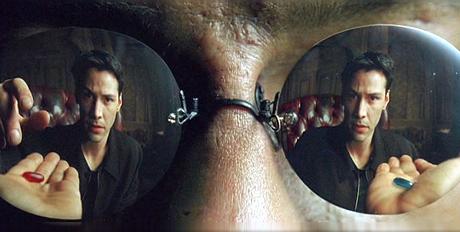
I have been having a conversation about headlocks on Rum Soaked fist the Chinese internal arts forum. Apparently a lot of artists don't use it, so I was exploring it.
Questions posed by member JohnWang
- How to break (or take advantage on) his strong body structure/alignment?
- How to take advantage on his waist wrapping arm?
- How to destroy his balanced horse stance?
My findings
- How to break (or take advantage on) his strong body structure/alignment?
I assume we are talking about when the opponent is standing before we lock happens. I used the model of head misalignment and spinal rotation. The entry into the head control rolls the head around, and I scoop the head to my shoulder, so it is connected to me. This moves the head away from its normal position on both the X and Y axis. Matl Sensei demonstrates this well. Now the opponents head is connected to my body as I rotate my body the opponents head-spine-hips are all misaligned robbing him of virtually all power.
The only problems I sometimes faced was the entry as my partners knew what I was shooting for. I found as long as I had a grip on their sleeve with my non head locking hand, I could manipulate their shoulders as I entered reinforcing and causing more structural distortion in my opponent.
- How to take advantage on his waist wrapping arm?
I did not find that is was a big issue - at least with the players I was with tonight. (of course there is always someone better out there) If the above step was done correctly. The two problems we found, was if you did not distort the posture correctly you found yourself in position for counter Tani Otoshi (valley drop) throw. If the head lock was performed well this was not an option, as the spine was too distorted to generate the counter.
The other issue I found once my partners saw what I was trying to work on, they predicted the entry and pushed away my hips with the "waist wrapping hand". This was difficult for them to do, but the times they were successful it propelled me into an outside reap or drop (osoto gari or osoto otoshi) yes it negated the headlock entry, but it fell well within the chain of renzaku (continuous attacks based of partners reactions)
As to issues of the kidney punch. With the twisted head a spine my partners could deliver virtually no energy.
- How to destroy his balanced horse stance?
I found this one was the easiest. Our conclusion - there is no balanced horse stance in a grappling situation if you are with people who understand triangulation and center drop who is holding a person with a misaligned head and twisted spine. Once the head lock (head misalignment and spinal twist) was in place the two partners have a shared center of balance. We were connected. If I moved my hips just a half inch it rocked my partners balance to his heels. Stepping through him caused structural collapse. Stepping behind either of his feet caused either a reap, or a trip with center drop. Stepping forward was a ashi guruma throw. Stepping to the sides caused versions of Tai Otoshi. As long as the head a spine misalignment happened at the first stages - you were pretty golden. When it didn't happen I had to go into a barrage of foot sweeps to make up for the mistake.
Conclusion
I am higher ranked in aikido than judo, so I prefer to deal with the problem before it gets to tight grappling and wrestling. If typical aiki strategies fail and the opponent gets close enough, moving in with the hips and feet are the way to go. Judo time! To insure the hip and foot attacks will be successful the structure of the person has to be broken. We have to bend the spine somehow. Controlling the head seems to be a good option. While there are problems and counters, it is the skill and talents of both participants that will shape the unknown future into a technique or failure. I personally will keep the headlock in my arsenal of tools to train with. A perfect tool, no - but in martial arts I haven't found one yet.
My recommendation is to train longer and be more skilled than your opponents.
The elements I felt tonight (but may change on my next practice)
Head control
1. the opponents head must be taken off its alignment in at least two dimensions
2. the opponents head should be embraced to your own body
Spine control
3. The head now off alignment and attached to another center. Now the body adjusts to continue the spinal twisting in the opponent, effectively robbing them of power and options.
Foundation Control - attack with the hips and feet.
4. Now that the two people's structured are attached and the opponents structure has been crumbled - there is an endless variety of angles to drop center, reap feet, trap feet preventing recovery. In my techniques the majority of opponents stance crumbling at this comes from hips moving in, or my opponents feet being moved by my reaps.
The most effective head locks I have thus far made seem to start with the head, move down the spine, affect the hips and then feet - then the whole structure comes crumbling down.









